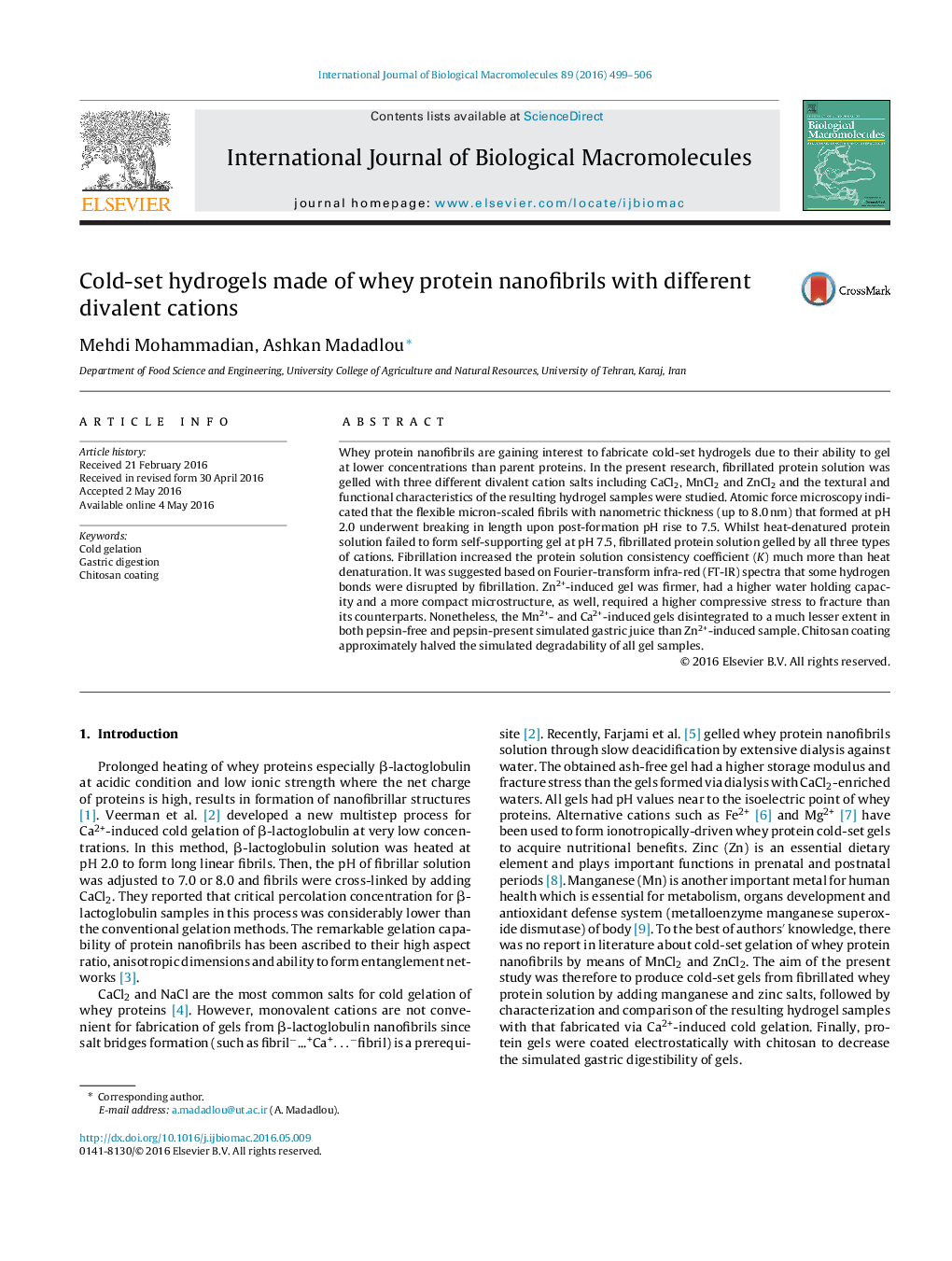| Article ID | Journal | Published Year | Pages | File Type |
|---|---|---|---|---|
| 1985757 | International Journal of Biological Macromolecules | 2016 | 8 Pages |
•Whey proteins fibrils formed at pH 2.0 broken to smaller ones by pH increment to 7.5.•Fibrillated solution had higher consistency than heat-denatured sample.•Zn2+ yielded firmer hydrogels with more compact microstructure than Ca2+ and Mn2+.•Zn2+-induced gel disintegrated in simulated gastric juice to a greater extent.•Chitosan-coating augmented the gastric digestion stability of hydrogels.
Whey protein nanofibrils are gaining interest to fabricate cold-set hydrogels due to their ability to gel at lower concentrations than parent proteins. In the present research, fibrillated protein solution was gelled with three different divalent cation salts including CaCl2, MnCl2 and ZnCl2 and the textural and functional characteristics of the resulting hydrogel samples were studied. Atomic force microscopy indicated that the flexible micron-scaled fibrils with nanometric thickness (up to 8.0 nm) that formed at pH 2.0 underwent breaking in length upon post-formation pH rise to 7.5. Whilst heat-denatured protein solution failed to form self-supporting gel at pH 7.5, fibrillated protein solution gelled by all three types of cations. Fibrillation increased the protein solution consistency coefficient (K) much more than heat denaturation. It was suggested based on Fourier-transform infra-red (FT-IR) spectra that some hydrogen bonds were disrupted by fibrillation. Zn2+-induced gel was firmer, had a higher water holding capacity and a more compact microstructure, as well, required a higher compressive stress to fracture than its counterparts. Nonetheless, the Mn2+- and Ca2+-induced gels disintegrated to a much lesser extent in both pepsin-free and pepsin-present simulated gastric juice than Zn2+-induced sample. Chitosan coating approximately halved the simulated degradability of all gel samples.
